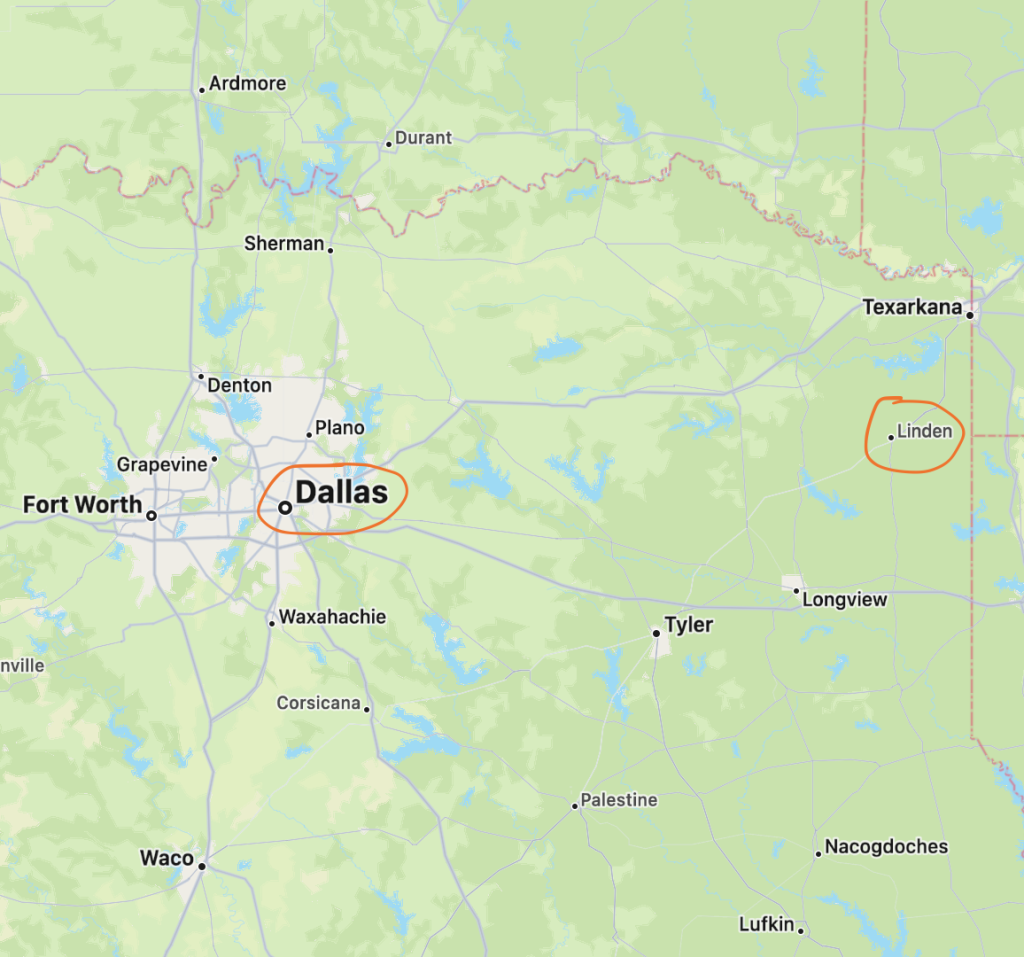
About T-Bone Walker

According to the Rock & Roll Hall of Fame, T-Bone Walker is known as the “godfather of the modern electric blues guitar.” Born May 28th, 1910, and originally named Aaron Thibeaux, he grew up in Linden, Texas, then moved to Dalles with his mother when he was 2.
Walker has inspired various other artists, such as B.B. King, Chuck Berry, and Jimi Hendrix. What sets him apart from other artists is his passion for the electric guitar. In various photos, he’s always pictured playing a Gibson ES-5. In many of his performances, he would play the guitar behind his head while he was doing the splits. Now that’s showmanship, if you ask me!
Upbringing and Fame

T-Bone Walker’s parents, Movelia Jimerson and Rance Walker, were both musicians. His stepfather, Marco Washington, who was a member of the Dallas String Band, taught him to play various instruments, including the guitar.
As a teenager in the 1920s, he began his career in Dallas, Texas. Leaving school at the age of 10, he was professionally playing on the blues circuit around the age of 15. According to the Rock and Roll Hall of Fame, Walker served as Blind Lemon Jefferson’s “lead boy”. Funny enough, Blind Lemon Jefferson, who is seen as the “Father of the Texas Blues,” was a family friend and would come over for dinner sometimes. Huddie Ledbetter (Lead Belly) is also seen as responsible for familiarizing Walker with blues music since infancy.
From what we learned in class, we know that Dallas, Texas, did have a booming music scene. Inside Dallas, an area called Deep Ellum, “Deep” meaning the distance from the courthouse square and “Ellum” from the way original residents pronounced “Elm”, had a diverse and ever-changing music scene. Blind Lemon Jefferson is seen as a legend there and was also one of the first blues musicians to record his music.
“In 1935 Walker moved to Los Angeles, where he quickly made a name for himself singing and playing banjo, and then guitar, for Black audiences in two popular nightclubs, Little Harlem and Club Alabam.”
Texas State Historical Association
It wasn’t really until Walker moved to Los Angeles and began playing gigs that he started to see more followers behind his music. Audiences enjoyed his stage presence with acrobatic performances, dancing, and playing. In 1935, he became the first blues musician to perform using an electric guitar.
My Top Favorite Songs:
“Call it Stormy Monday” was a chart hit in 1948, and it became Walker’s best-known and most recorded song. This song is specifically said to have inspired B.B. King to purchase an electric guitar.
Who ‘‘really started me to want to play the blues. I can still hear T-Bone in my mind today from that first record I heard, ‘Stormy Monday.’ He was the first electric guitar player I heard on record. He made me so that I knew I just had to go out and get an I electric guitar.”
B.B. King
“Mean Old World” was recorded in 1942 as well, and he began performing this song when he was with Les Hite and his Orchestra.
His Sound

After listening to his discography and adding many of his songs to my “Texas Queen” playlist, I really enjoy his sound and style. I love the way he plays the guitar because it has such power. In “Mean Old World,” I feel as though the guitar has this whining sound to it that just elevates the song. He was meant to play the electric guitar because he just adds so much feeling to each note and how long he plays them for.
T-Bone Walker was the first to make a guitar wail, cry out and buckle under the weight of his emotion.
Rock and Roll Hall of Fame
ES-5 Gibson Guitar

This specific guitar in the picture used to belong to Waker. Apparently, it was stolen from him at a jazz festival in France in the 1960s. It passed through many owners who themselves had no idea who it originally belonged to. Today, the guitar sits at Matt’s Guitar Shop in Paris.
After his Death
Walker died of a stroke in Los Angeles in 1975; however, his music still lives on today, and people have not forgotten about him. His album “T-Bone Blues” was inducted as a classic of blues recordings in the Blues Foundation Hall of Fame in 2009. He was inducted into the Rock and Roll Hall of Fame in 1987 and the Blues Foundation Hall of Fame in 1980.
Resources:
“Call It Stormy Monday (but Tuesday Is Just as Bad).” Wikipedia, Wikimedia Foundation, 7 Nov. 2022, https://en.wikipedia.org/wiki/Call_It_Stormy_Monday_(But_Tuesday_Is_Just_as_Bad).
Dance, Helen Oakley. “Walker, Aaron Thibeaux [t-Bone] (1910–1975).” TSHA, 1 Apr. 2021, https://www.tshaonline.org/handbook/entries/walker-aaron-thibeaux-t-bone.
“Mean Old World.” Wikipedia, Wikimedia Foundation, 1 Apr. 2021, https://en.wikipedia.org/wiki/Mean_Old_World.
“T-Bone Walker.” T-Bone Walker | Rock & Roll Hall of Fame, https://www.rockhall.com/inductees/t-bone-walker.
“T-Bone Walker.” Wikipedia, Wikimedia Foundation, 12 Feb. 2023, https://en.wikipedia.org/wiki/T-Bone_Walker.
“This 1949 Gibson ES-5 Once Belonged to T-Bone Walker.” Guitar.com | All Things Guitar, 26 Aug. 2019, https://guitar.com/features/t-bone-walker-1949-gibson-es-5/.
Trujillo, Diana. “The History of Live Music in Dallas.” Visit Dallas, https://www.visitdallas.com/blog/history-of-live-music/.

